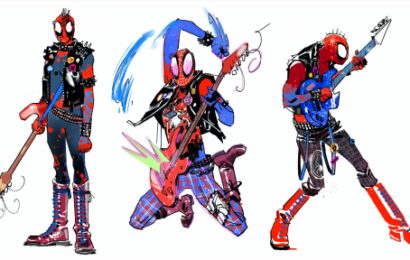From the sharp sting of platonic rejection in “The Banshees of Inisherin,” to suicide and self-destruction in “Tár,” to death on a sinking cruise ship in “Triangle of Sadness,” grief and loss are a collective current running throughout this season’s Oscar contenders in the screenplay category.
Inconsolable loss plays out with disastrous, violent consequence in “Banshees,” Martin McDonagh’s crushing excavation of friendship torn asunder on a remote island off the coast of Ireland in the early 1920s. As the Irish Civil War rages on the mainland, lead protagonist Pádraic, played to eloquent perfection by Oscar nominee Colin Farrell, is consumed with the heartbreak resulting from another catastrophic event: his comrade Colm (Brendan Gleeson, also an Oscar nominee) has suddenly, and without warning, broken off their friendship.
Pádraic is so distraught, he cannot concentrate on anything else. In one scene, he sulks in his rocking chair, his pet donkey Jenny curled on the floor underfoot. Pádraic’s sister Siobhán (fellow Oscar nominee Kerry Condon), with whom he lives, barges into their squat, brick house, urging Pádraic to dispatch the animal outdoors. But Pádriac is steadfast, resolute.
“I am not putting me donkey outside when I’m sad, OK?” he tells Siobhán, his eyes glistening with despair.
On the surface, Pádraic is a simple man — unmarried, childless, no remarkable talents of which to speak. But an emotional storm brews beneath that surface. Pádraic is gutted, broken. Isolated and without much of anything else to tether him, Pádraic’s menagerie of animals — goats, cows, but mainly donkey Jenny — remain his only solace.
The scene, conveying the bond between mankind and our pets, is ultimately one of great profundity. Colm has jettisoned Pádraic, wanting absolutely nothing to do with him. Jenny is all Pádraic has left. “The animals in some way were there as not only a friend, but it’s almost all Padráic has got to fall back on, apart from his sister, when things go terribly badly,” says McDonagh. “But also, the animals are there I think to sort of quietly, sadly, observe this sort of destruc- tive relationship between the two men.”
Friendship between two men is a topic rarely dissected in film, and “Banshees” has captured an audience of universal proportions. What happens when a friendship collapses, the experience of that gut wrenching and disorienting demise, is a scenario to which all human beings can relate, notes McDonagh.
“The film has definitely touched a nerve with a lot of people, especially with men, because it’s a story that doesn’t really get dealt with in the movies, that of male friendship, and the vicissitudes of all that when it can go wrong,” says the writer-director. “It’s a film that captures just the sadness of what happens when one person doesn’t want to be friends with you anymore. And it’s not a romantic thing — it’s something that’s almost even more unexplainable. In a romantic falling out, you can kind of map where it’s gone wrong. Oftentimes, you can get over it more easily, I think, because there are so many other aspects at play. But when it’s just a simple friendship, it can be so painful. It makes you reevaluate
who you are, how you are seen and what life’s all about.”
In “Tár,” how one is viewed by the world, the optics of one’s professional and social positioning is what dooms its main character. Todd Field’s dizzying portrayal of a world-renowned orchestra conductor and composer (Oscar nominee Cate Blanchett) explores the fiery aftermath of a professional fall from grace. It’s a thunderous career crash in the music world that plunges Lydia down a proverbial spiral staircase of angst, loneliness and delusion. She loses her job, she becomes estranged from her wife and child. Eventually, Lydia loses her mind. Her life, as she knew it, is just gone.
“‘Tár’ is a film centered on the acquisition and attainment of power, and how this shapes and, of course, ultimately distorts an individual,” Field says. “There is most certainly a component of grief with the loss of that power. However, the way this manifests for Lydia may be more akin to something like substance withdrawal. We first meet her standing atop a power structure, a structure carefully crafted around a self-constructed narrative that forms her mask. When the scaffolding of that structure collapses the mask shatters, and all she’s left to look at, and hear, is the echo of what was once her true self.”
Sense of self and social status becomes a casualty in “Triangle of Sadness,” which satirizes socioeconomic structure and the modern-day class system as affluent passengers on a ritzy high price-tag cruise ship succumb to their own destruction. As the ocean swallows the ship, these self-absorbed vacationers are too busy preening themselves and counting their money to pay attention to the thrashing waves smashing the vessel’s windows. They have lost all sense of humanity — and they are about to lose their lives. So obsessed with wealth and, in some cases, social-media fame, they cannot properly accept they might all die. They refuse to acknowledge — they are incapable of acknowledging — this looming loss.
“There are some quotes that I have been inspired by when doing the filming and one of them is, ‘It’s easier to imagine the end of the world than the end of capitalism,’” says “Triangle” writer-director Ruben Östlund, plucking a line from Mark Fisher’s “Capitalist Realism: Is There No Alternative?”
“And when I say capitalism, I mean the kind of harsh, unregulated capitalism,” Ostlund continues. “The market economy itself is not something that is necessarily bad. But as human beings, as soon as we have climbed up the [financial] ladder, we are going to have a hard time climbing down the ladder. And that’s what I was interested in — what happens to these people when they are climbing down.” When a handful of survivors are marooned on a deserted island, even then they are shocked that their prior places in society no longer serve them in their quest to be rescued. Whatever qualities, luck or confluence of events that enabled them to secure massive material wealth have vanished into the ocean, along with the sunken ship.
“They are at the top of the hierarchy on the yacht, but when they ended up on that deserted island, their abilities that they have that made them successful in business or whatever it was, are not very useful anymore,” says Östlund. “They do not have the basic, practical skills needed to survive. And if you look at modern human beings, very few of us have that ability.”
In a parallel twist of fate, the star of “Triangle of Sadness,” South African-born actor Charlbi Dean, died unexpectedly, just a few short months after the film’s release. That loss, says Östlund, informed, if not the making of the film itself, then what came after — the press, the interviews, the screenings.
“Whenever we have been presenting the film, there’s one person missing on stage every time,” he says. “Of course, this is not comparable with [the grief ] of her parents or her friends, and my thoughts go out to them. But there is a feeling of loss.”
Loss also pervades “The Fabelmans,” in which divorce and the dissolution of the nuclear family are the events over which Sammy, its teenage protagonist, grieves. Based loosely on Steven Spielberg’s childhood, the film captures the trauma of that contained family unit deteriorating, and how that process alters the course of Sammy’s adolescence. His mother (played by Oscar nominee Michelle Williams) has run off with her husband’s best friend, Bennie (Seth Rogen), an avuncular figure Sammy has known his entire life. Sammy’s father, Burt (Paul Dano), is depressed and adrift. And Sammy, lacking any steadying force in the way of a parental unit — their split ignites a series of movies to different homes, different states and schools — clings to movies as an emotional anchor.
“The Fabelmans” is dedicated to the memory of Spielberg’s parents, Leah Adler and Arnold Spielberg, who died in 2017 and 2020 respectively. The film is very much a product of grief, of channeling that anguish and sorrow into something that, effectively, can live forever. Because movies, unlike people, extend beyond the realm of the human lifespan.
Tony Kushner, Spielberg’s frequent screenplay collaborator, recalls how his parents’ deaths informed the making of “West Side Story” and, later, “The Fabelmans.”
“Leah had died before we shot ‘West Side Story.’ And then during the time that we were shooting ‘West Side Story,’ Arnold — he was 102 — he was going into a really steep decline,” says Kushner. “And so, Steven was still mourning the loss of his mother and I think bracing himself for the imminent loss of his father. And so there was real grief, and it was kind of an amazing thing to watch Steven on set, learning how he was going to work with those feelings, and make them part of his filmmaking process.”
By the time Kushner and Spielberg co-wrote the screenplay for “The Fabelmans,” Kushner says that grief spun into a mechanism by which to explore the “central theme” of childhood instability. “If you think about his movies, one of the strongest tensions, the polarities in his films are of danger versus safety,” he says. “There’s this very strong sense of home and security and comfort and family, and also a very powerful sense of the fragility of all of those things and the way that those things are constantly menaced from without.”
Movies, unlike real life, enable human beings to stop time, to conserve that which cannot be kept forever. Movies, says Kushner, are memories preserved onscreen, frozen in time. “The Fabelmans” is a story of loss, but it’s also a story of hope. Ultimately, it’s a film that functions the way all films do — as a means by way to control the narrative, to control the story, to make sense of that which is, in real life, inscrutable. What cinema does, at its core, at its most sublime, is make loss somehow bearable.
“The truth of making art is that it does give you an illusion of meaning and understanding that makes you feel that you’re ordering reality and making it something you can control and making it more hospitable and manageable,” says Kushner. “But it is an illusion. And since art is always inclined towards truth, the truth is that life is, in fact, fraught with danger. We’re all mortal and we’re all going to die. Art is always going to pull you. It’ll lead you into safety. And then it’s going to pull you right out of it.”
Read More About:
Source: Read Full Article







